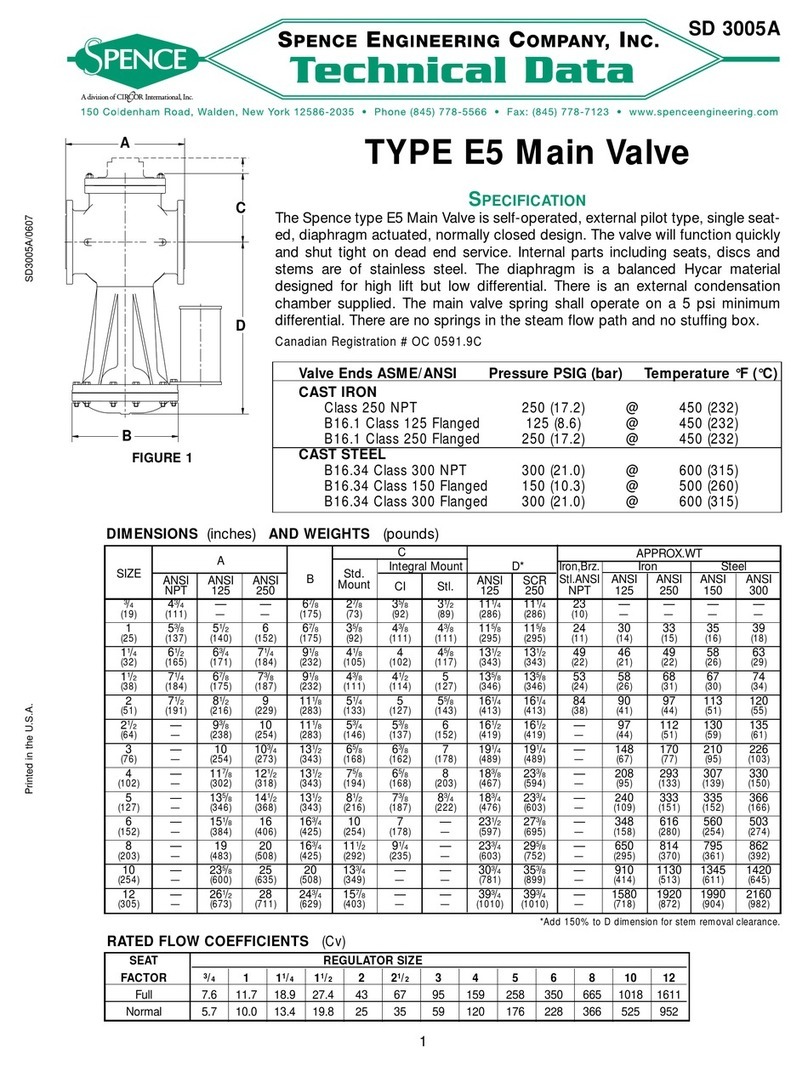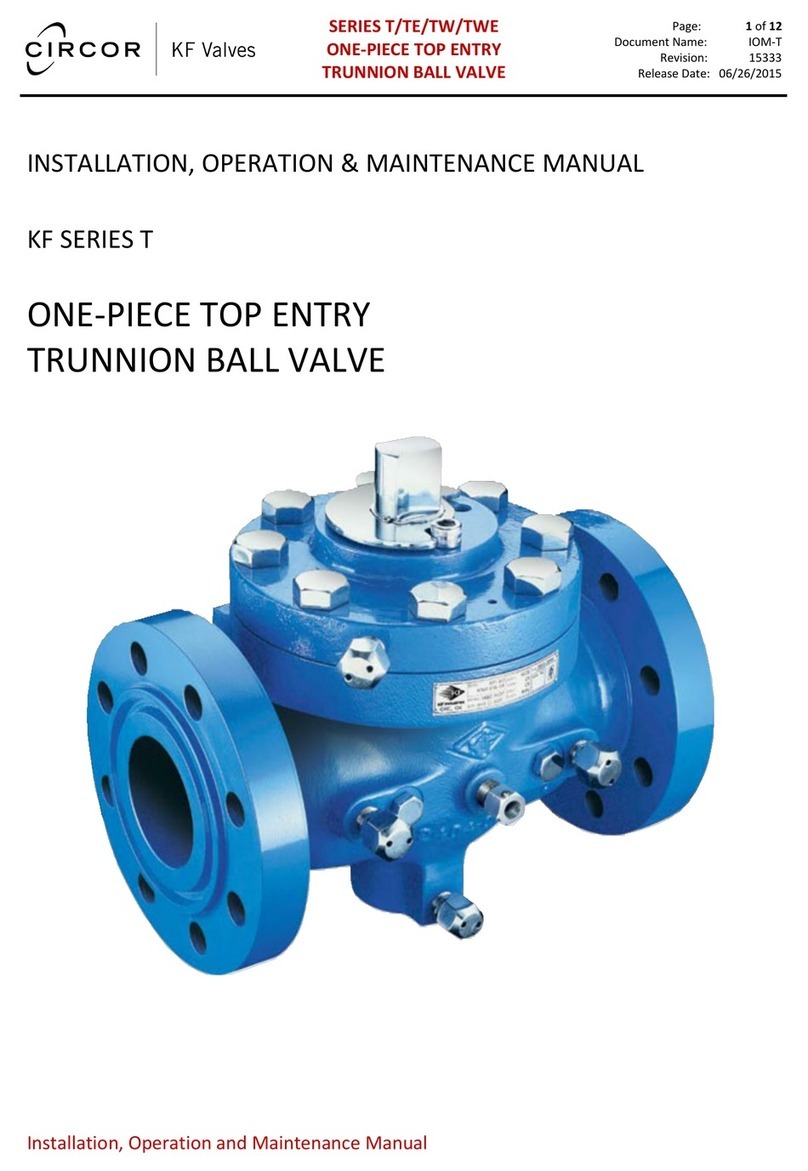
CFTIIP-015
Rev.0
__________________________________________________________________________________
This document is the property of Circor Flow Technologies India Pvt Limited should not copied or
reproduced in one form or another.
Page 7 of 15
6. Valve Disassembly and Reassembly
6.1 Disassembling the Body
To disassemble the valve body, refer to
Figure 2 then proceed as follows:
WARNING: Depressurize line to
atmospheric pressure and drain all fluids
before working on the valve. Failure to do so
can cause serious injury. Remove all
compression from adjusting springs
For Normally open valve, relieve air pressure
from the actuator. Remove the tubing from
upper diaphragm case.
For Normally closed valve, apply sufficient
air to the actuator diaphragm to keep valve
plug from touching seat while disengaging
valve plug stem from actuator stem
1. Loosen valve stem nut. Use wrench on
plug stem flats and turn valve plug (15) put
of actuator stem until stems separate.
Remove the tubing from lower diaphragm
case. Do NOT grasp the stem with pliers.
2. Remove cap screws holding actuator to
bonnet (2) and lift off actuator. Use caution
not damage the valve stem with yoke.
3. Remove the stem nut, travel indicator,
packing flange Studs & nuts (13, 14),
packing flange (12), and packing follower
(11).
4. Remove bonnet nuts and lift bonnet (2)
straight up until it clears valve plug stem (15)
being careful not to damage threads. Take
out bonnet gasket (4).
5. Lift out valve plug (15) assembly and cage
(18).
6. Remove seat ring (17) and seat ring gasket
(5)
7. Hold plug assy (15) with a wrench on stem
flats and remove the pin holding the plug
head. Loosen the plug stem from the plug
head.
6.2 Cleaning
Remove the old packing from the bonnet and
clean and polish the stuffing box. Clean all
parts with solvent.
Polish the parts with a fine aluminium oxide
cloth to remove any foreign matter. Replace
any worn or damaged parts. Be sure all
gasket seating surfaces are clean and smooth.
If any of the gasket faces are steam cut and
remachining is needed, it is recommended
that the valve be sent to Leslie controls
rebuilding department fro repair. ALL
CRITICAL dimensions must be maintained
during machining process.
6.3 Lapping-in of valve plug and seat
ring
1. Place seat ring (17) in body recess with
seating surface upward. Lower cage (18) into
body with window opening downward. Make
sure cage fits into body with window
openings downward. Make sure cage fits
over raised face of seat ring (17).
2. Use a small amount of Carborundum grade
“CF” lapping compound (or equal) evenly
spread around valve plug seating surface.
Carefully insert valve plug (15) into body
until plug contacts seat ring (17). Lower
bonnet (2) over valve stem making sure stem
threads are not damaged. Place one metal
packing ring (8) over valve stem and into
bottom of stuffing box to act as a guide while
lapping plug. Lightly lap plug to seat ring
(15) using weight of plug only and by
rotating the plug in ¼ turn increments. Lift
and rotate plug 90 deg., three or four times
during lapping procedure. This will ensure
even distribution of compound. DO NOT lap
excessively- 10 to 12 turns should be
sufficient. Remove the parts and clean them
thoroughly after lapping. Plug (15) and seat
ring (17) contact may be checked by the
bluing method before assembly.































